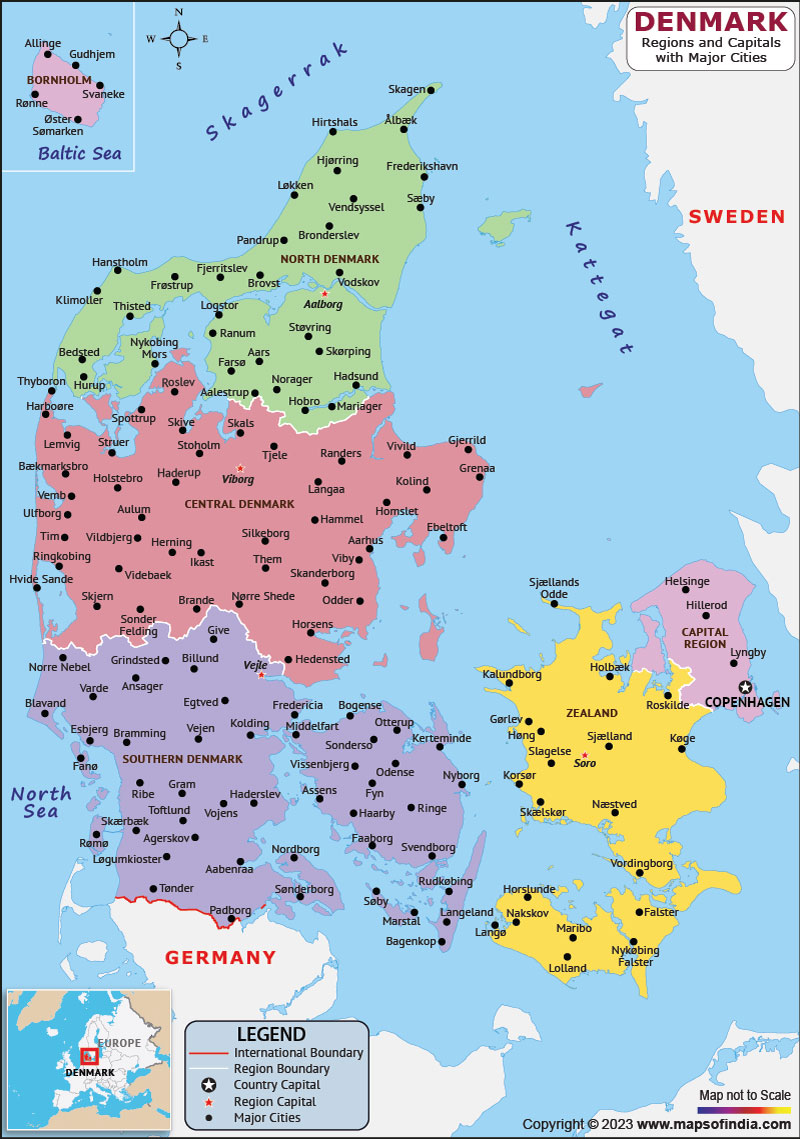Denmark is a nation situated in the Northern portion of the European continent. With a population of approximately 5.9 million people, it is known for its rich cultural heritage, modern cities, and stunning landscapes. The country is situated on a peninsula and is surrounded by the North Sea and the Baltic Sea, making it a popular destination for coastal tourism and water sports.
History
Denmark has a vast and rich background, going all the way back to the Viking Period. During the Middle Ages, Denmark became a powerful kingdom, with the capital city of Copenhagen serving as an important center of trade and culture. In the 19th century, Denmark became a constitutional monarchy and later played a significant role in World War I and World War II.
After the war, Denmark focused on rebuilding its economy and infrastructure, with the country becoming a member of the European Union in 1973. Today, Denmark is a prosperous and stable country with a high standard of living and a reputation for social welfare policies.
Culture
Danish culture is known for its focus on simplicity, functionality, and hygge, a concept of coziness and comfort. The country is also known for its rich artistic and literary traditions, with famous authors such as Hans Christian Andersen and Karen Blixen gaining international recognition.
Danish cuisine is also highly regarded, with specialties such as smørrebrød (open-faced sandwiches), meatballs, and the famous Danish pastry, wienerbrød. The country is also known for its love of beer and has a thriving craft beer scene.
Language
The majority language of the nation is Danish, a Germanic language closely related to Norwegian and Swedish. Danish has a complex grammar and pronunciation system, with many sounds that can be difficult for non-native speakers to master. English is also widely spoken in Denmark, especially among younger generations and in urban areas.
Geography
Denmark is the southernmost of the Nordic nations and is positioned in Northern Europe. The country is made up of a peninsula and many islands, with the Jutland Peninsula serving as the mainland. Denmark is recognised for its beautiful coastal sceneries, which include vast lengths of white sand beaches and charming fishing communities.
| Official Name | Kingdom of Denmark |
| Capital | Copenhagen |
| Population | 5935619 |
| Area | 42,943 km2 |
| Currency | Krone |
| Religion | Christianity |
| Language | Danish, German |
| Major Cities | Aarhus, Aalborg, Odense |
FAQs
Q1: What is the Danish concept of hygge and why is it important?
Hygge is a Danish concept of coziness, warmth, and a feeling of contentment and well-being. It's all about creating a comfortable and inviting atmosphere, often involving candles, soft lighting, and warm blankets.
Q2: What is the role of bicycles in Danish society?
Bicycles play a significant role in Danish society, with the country having one of the highest rates of cycling in the world.
Q3: What is the significance of the Danish royal family?
The Danish royal family is a symbol of national unity and pride, and has a long history dating back to the Viking Age. Today, the Danish royal family is a constitutional monarchy, with the current monarch being Queen Margrethe II.
Q4: What is the traditional Danish cuisine?
Traditional Danish cuisine features many hearty and comforting dishes, often centered around meat and potatoes. Some popular dishes include smørrebrød (open-faced sandwiches), frikadeller (meatballs), flæskesteg (roast pork), and rugbrød (rye bread).
Last Updated on: May 01, 2023
